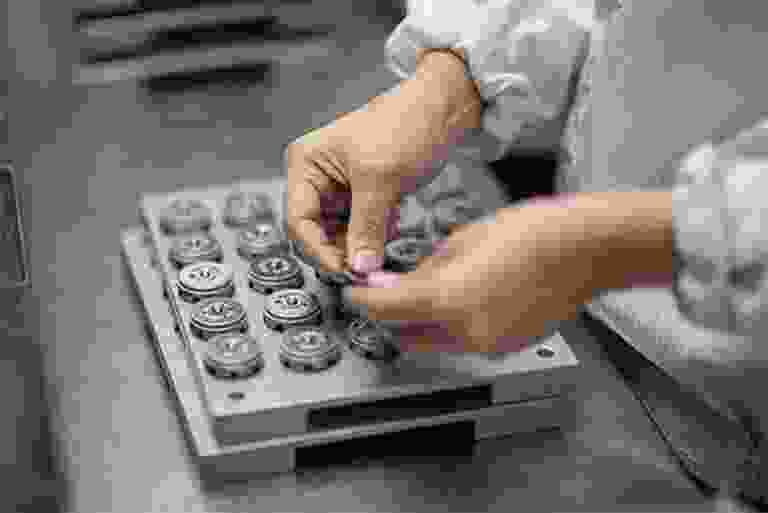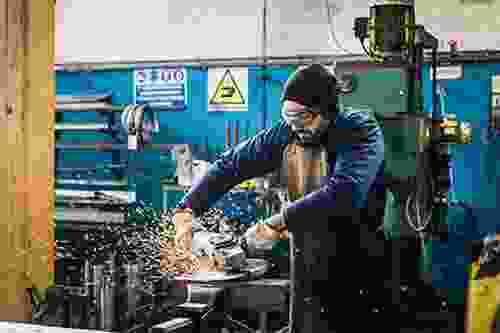A brushless motor is a motor in which the commutator, brushes, and other mechanical contact parts have been removed. The commutator and brushes are eliminated by having an electronic circuit take the place of the commutator. In a DC motor, the magnetic force of the stator winding circuit drives the permanent magnet rotor. The current is switched by a sensor and a semiconductor switch to rotate the motor.
DC motors have the characteristics of DC motors in that the current is proportional to the torque and the voltage is proportional to the rotation speed, while the structure of AC motors incorporates the best features of both. A brushless motor is a compact, high-power, high-efficiency, and long-life motor that does not generate sparks or noise and is used in a wide range of applications, from computers to home appliances.
Uses of Brushless Motors
Brushless motors have DC motor characteristics and are characterized by high efficiency, long life, and low noise. They are widely used in home appliances, electronic devices, and automobiles. In-home appliances and brushless motors are used in fan motors and drive motors for air conditioners, dishwashers, washing machines, refrigerators, fans, vacuum cleaners, etc. They are ideal for compressors in inverter-controlled air conditioners and refrigerators.
Professional electronic equipment, they are widely used in paper feed for laser printers, propeller drive and gimbal control for drones, hard disks, and optical disks, and drive for drills, screwdrivers, and saws for tools. They are also used in vending machines, financial terminals, ticket-vending machines, copiers, water heaters, and refrigerated showcases.
In addition, adoption in the automotive field is rapidly increasing. Applications are expanding to include drive motors for electric power steering, door locks, headlight optical axis adjustment, door opening and closing, air conditioner compressors for electric vehicles, and traction motors for electric vehicles.
Principle of Brushless Motors
Brushless motors consist of a rotor and stator, a sensor to detect the rotor’s rotational position and a driver circuit to drive the motor.
1. Rotor and Stator
The rotor creates a magnetic field with a permanent magnet, and the stator generates a magnetic flux by winding the rotor. The direction of the magnetic flux is changed by changing the direction of the current flowing through the stator coils according to the rotation angle of the rotor. Brushless motors use sensors and semiconductor switches instead of commutators and brushes as a means of changing the direction of the magnetic flux.
2. Rotor Rotation Position Detection
Hall ICs or optical encoders are used as sensors to detect the rotational position of the rotor. Another method is to detect the back EMF. The rotor is rotated by detecting the position of the rotor and switching the current so that the direction of the magnetic flux in the stator advances sequentially. If the motor winding is 3-phase, three sensors are placed inside the stator and digital signals are output according to the rotation of the rotor.
3. Drive Driver
Brushless motors require an inverter circuit driver to control the motor as a power source. A switching transistor is connected to the motor winding, and six transistors make up the inverter. A diode bridge rectifies the commercial power supply to convert it to DC voltage, which is then supplied to the inverter circuit.
A digital signal from the rotor position detection sensor is input to the transistors in the inverter circuit, turning the inverter power supply ON and OFF. This power is supplied to the motor windings to drive the motor. The magnetic pole angle of the rotor is detected from a combination of signals from the sensors, and the transistors in the windings where torque is required are controlled to create a rotating magnetic field.
The rotational speed of the motor is fed back from the sensor signals to the control circuit so that a predetermined speed can be maintained.
Other Information on Brushless Motors
Features of Brushless Motors
1. Long Life
Brushless motors have long-life characteristics because they have no commutator, no brushes, and no sliding parts. They last 10 times longer than brush motors and are easier to maintain.
2. Motor Characteristics
The motor has the characteristics of a DC motor, with current proportional to torque and voltage proportional to rotational speed, and high torque can be obtained even at low speeds. It has the highest efficiency compared to other motors, and its small size and low noise make it suitable for a wide range of applications. High-speed rotation is also easy, and the noise generated is low.
3. Controllability
The small size, lightweight, and relatively small moment of inertia provide excellent controllability in response to changes. Even if the load changes, it can be operated at a stable speed from low to high.
4. Disadvantages
Requires an inverter circuit to control motor rotation as the motor’s power source. The cost of the entire device, including the control unit and rotation position sensor, is unfavorable.




